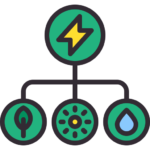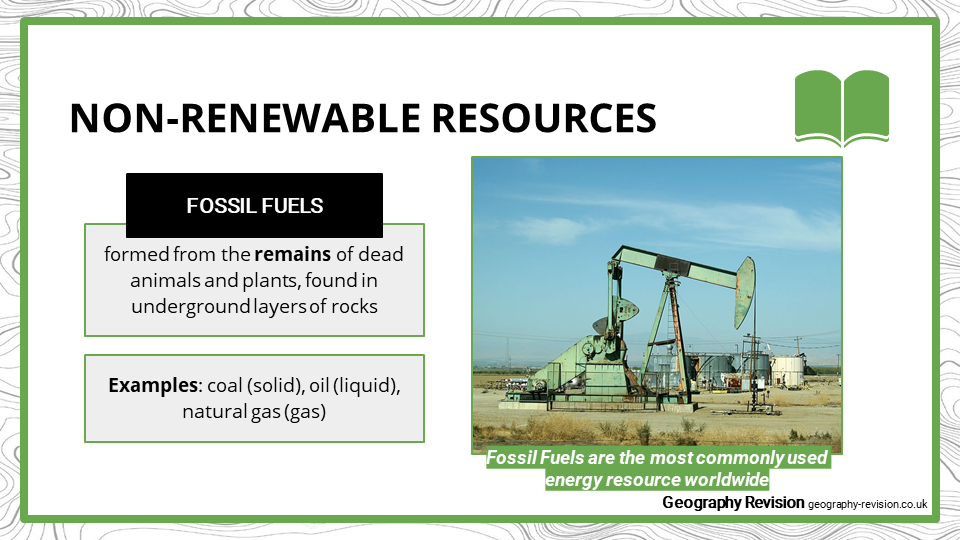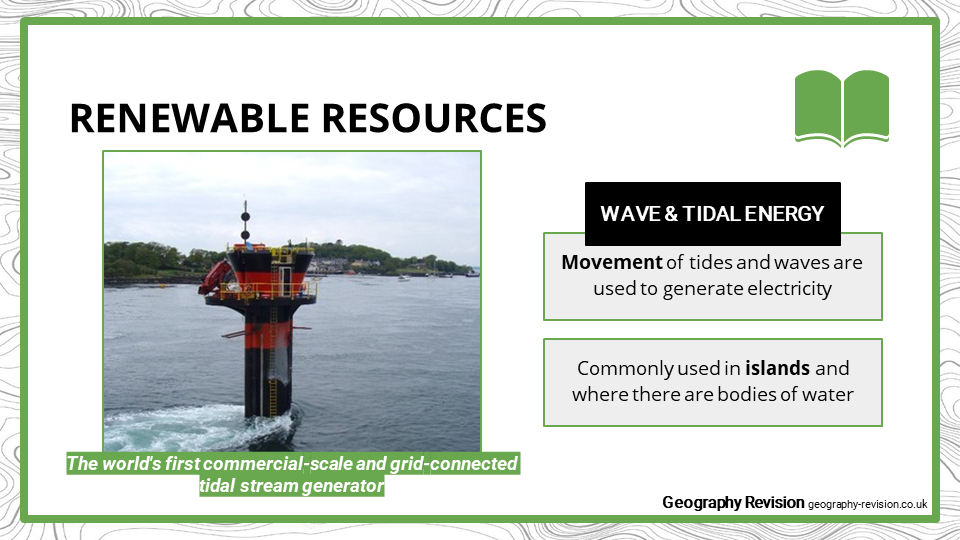Download the GCSE Geography Resource Management: Renewable vs. Non-renewable Resources module
This module contains:
- An editable PowerPoint lesson presentation
- Editable revision handouts
- A glossary which covers the key terminologies of the module
- Topic mindmaps for visualising the key concepts
- Printable flashcards to help students engage active recall
- A quiz with answer key to test knowledge and understanding of the module

Resource Management: Renewable vs. Non-renewable
Non-renewable energy comes from natural resources that cannot be readily replaced by natural means at a pace that can keep up with consumption, thus, making them limited and difficult to sustain. These resources, however, are some of the most commonly used around the world, and they include nuclear energy and fossil fuels.
Renewable energy comes from natural resources which can readily replenish depleted portions at a pace that can keep up with consumption, making them sustainable ways of providing clean energy. These resources, however, are commonly used as alternative energy sources, since non-renewables such as fossil fuels are still the leading energy source around the world.
This GCSE Resource Management module introduces Renewable vs. Non-renewable to your students, explaining:
- What is the difference between renewable and non-renewable resources?
- What are the different examples of renewable and non-renewable resources?
- What is the UK’s energy mix?
- What are the factors that affect global variations in energy mix?
- What are the attitudes of different stakeholders towards exploitation and consumption of energy resources?




